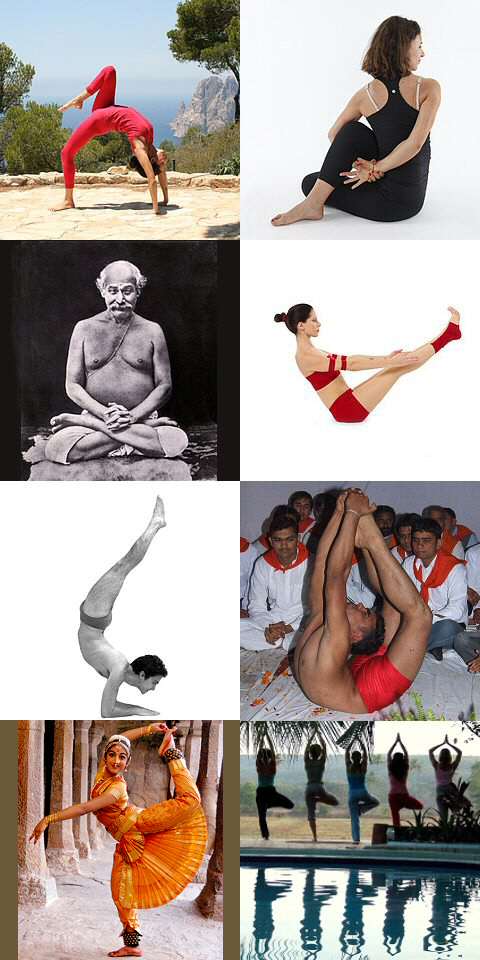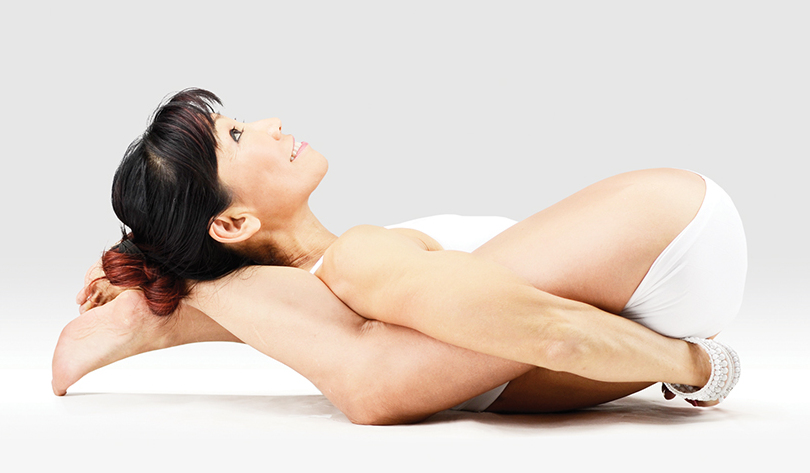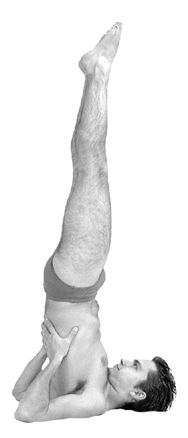|
Shirshasan
Shirshasana (Sanskrit: शीर्षासन, IAST: śīrṣāsana) Salamba Shirshasana, or Yoga Headstand is an inverted asana in modern yoga as exercise; it was described as both an asana and a mudra in classical hatha yoga, under different names. It has been called the king of all asanas. Its many variations can be combined into Mandalasana, in which the legs are progressively swept from one variation to the next in a full circle around the body. Etymology and origins The name Salamba Shirshasana comes from the Sanskrit words सालम्ब ''Sālamba'' meaning "supported", शीर्ष, ''Śīrṣa'' meaning "head", and आसन, ''Āsana'' meaning "posture" or "seat". The name ''Śīrṣāsana'' is relatively recent; the pose itself is much older, but had other names and purposes. Like other inversions, it was practised as Viparita Karani, described as a mudra in the 15th century ''Hatha Yoga Pradipika'' and other classical texts on haṭha yoga. Viparita Karani, ... [...More Info...] [...Related Items...] OR: [Wikipedia] [Google] [Baidu] |
List Of Asanas
An asana is a body posture, used in both medieval hatha yoga and modern yoga. The term is derived from the Sanskrit word for 'seat'. While many of the oldest mentioned asanas are indeed seated postures for meditation, asanas may be standing, seated, arm-balances, twists, inversions, forward bends, backbends, or reclining in prone or supine positions. The asanas have been given a variety of English names by competing schools of yoga. The traditional number of asanas is the symbolic 84, but different texts identify different selections, sometimes listing their names without describing them. Some names have been given to different asanas over the centuries, and some asanas have been known by a variety of names, making tracing and the assignment of dates difficult. For example, the name Muktasana is now given to a variant of Siddhasana with one foot in front of the other, but has also been used for Siddhasana and other cross-legged meditation poses. As another example, the headstand ... [...More Info...] [...Related Items...] OR: [Wikipedia] [Google] [Baidu] |
Asana
An asana is a body posture, originally and still a general term for a sitting meditation pose,Verse 46, chapter II, "Patanjali Yoga sutras" by Swami Prabhavananda, published by the Sri Ramakrishna Math p. 111 and later extended in hatha yoga and modern yoga as exercise, to any type of position, adding reclining, standing, inverted, twisting, and balancing poses. The ''Yoga Sutras of Patanjali'' define "asana" as " position thatis steady and comfortable". Patanjali mentions the ability to sit for extended periods as one of the eight limbs of his system. Patanjali ''Yoga sutras'', Book II:29, 46 Asanas are also called yoga poses or yoga postures in English. The 10th or 11th century '' Goraksha Sataka'' and the 15th century '' Hatha Yoga Pradipika'' identify 84 asanas; the 17th century ''Hatha Ratnavali'' provides a different list of 84 asanas, describing some of them. In the 20th century, Indian nationalism favoured physical culture in response to colonialism. In that enviro ... [...More Info...] [...Related Items...] OR: [Wikipedia] [Google] [Baidu] |
Dvi Pada Sirsasana
Yoganidrasana, ( sa, योगनिद्रासन) or Yogic Sleep Pose is a reclining forward-bending asana in modern yoga as exercise. It is sometimes called Supta Garbhasana (Reclining Embryo Pose). The name Dvi Pada Sirsasana is given to the balancing form of the pose. In hatha yoga, the pose was used in Pasini Mudra, the noose mudra, a seal to prevent the escape of prana; it was not an asana. Etymology and origins as a mudra The name of this pose comes from योग ''yoga'' meaning "uniting", निद्र ''nidra'' meaning "sleep", and आसन ''āsana'' meaning "posture" or "seat". The asana's name derives from the yogic sleep mentioned in the Hindu epic ''Mahabharata'': Yoganidrasana is described in the 17th century '' Haṭha Ratnāvalī'' 3.70. The pose is illustrated in an 18th century painting of the eight yoga chakras in Mysore. It is illustrated as "Pasini Mudra" (not an asana) in Theos Bernard's 1943 book '' Hatha Yoga: The Report of A Personal ... [...More Info...] [...Related Items...] OR: [Wikipedia] [Google] [Baidu] |
Lotus Position
Lotus position or Padmasana ( sa, पद्मासन, translit=padmāsana) is a cross-legged sitting meditation pose from ancient India, in which each foot is placed on the opposite thigh. It is an ancient asana in yoga, predating hatha yoga, and is widely used for meditation in Hindu, Tantra, Jain, and Buddhist traditions. Variations include easy pose (Sukhasana), half lotus, bound lotus, and psychic union pose. Advanced variations of several other asanas including yoga headstand have the legs in lotus or half lotus. The pose can be uncomfortable for people not used to sitting on the floor, and attempts to force the legs into position can injure the knees. Shiva, the meditating ascetic God of Hinduism, Gautama Buddha, the founder of Buddhism, and the Tirthankaras in Jainism have been depicted in the lotus position, especially in statues. The pose is emblematic both of Buddhist meditation and of yoga, and as such has found a place in Western culture as a symbol of health ... [...More Info...] [...Related Items...] OR: [Wikipedia] [Google] [Baidu] |
Malla Purana
Malla-yuddha (Sanskrit: मल्लयुद्ध, ) is the traditional form of combat-wrestling originating in India. It is closely related to Southeast Asian wrestling styles such as naban and is one of the two ancestors of kushti. Indian wrestling is described in the 13th century ''Malla Purana''. Malla-yuddha incorporates wrestling, joint-breaking, punching, biting, choking and pressure point striking. Matches were traditionally codified into four types which progressed from purely sportive contests of strength to actual full-contact fights known as ''yuddha''. Due to the extreme violence, this final form is generally no longer practised. The second form, wherein the wrestlers attempt to lift each other off the ground for three seconds, still exists in south India. Additionally, malla-yuddha is divided into four categories (see below). Each yuddhan is named after Hindu gods and legendary fighters: * ''Hanumanti'' - concentrates on technical superiority. * ''Jambuvanti'' ... [...More Info...] [...Related Items...] OR: [Wikipedia] [Google] [Baidu] |
Sanskrit
Sanskrit (; attributively , ; nominally , , ) is a classical language belonging to the Indo-Aryan branch of the Indo-European languages. It arose in South Asia after its predecessor languages had diffused there from the northwest in the late Bronze Age. Sanskrit is the sacred language of Hinduism, the language of classical Hindu philosophy, and of historical texts of Buddhism and Jainism. It was a link language in ancient and medieval South Asia, and upon transmission of Hindu and Buddhist culture to Southeast Asia, East Asia and Central Asia in the early medieval era, it became a language of religion and high culture, and of the political elites in some of these regions. As a result, Sanskrit had a lasting impact on the languages of South Asia, Southeast Asia and East Asia, especially in their formal and learned vocabularies. Sanskrit generally connotes several Old Indo-Aryan language varieties. The most archaic of these is the Vedic Sanskrit found in the Rig Veda, a colle ... [...More Info...] [...Related Items...] OR: [Wikipedia] [Google] [Baidu] |
Articles Containing Video Clips
Article often refers to: * Article (grammar), a grammatical element used to indicate definiteness or indefiniteness * Article (publishing), a piece of nonfictional prose that is an independent part of a publication Article may also refer to: Government and law * Article (European Union), articles of treaties of the European Union * Articles of association, the regulations governing a company, used in India, the UK and other countries * Articles of clerkship, the contract accepted to become an articled clerk * Articles of Confederation, the predecessor to the current United States Constitution *Articles of Impeachment, Article of Impeachment, a formal document and charge used for impeachment in the United States * Articles of incorporation, for corporations, U.S. equivalent of articles of association * Articles of organization, for limited liability organizations, a U.S. equivalent of articles of association Other uses * Article, an HTML element, delimited by the tags and * Ar ... [...More Info...] [...Related Items...] OR: [Wikipedia] [Google] [Baidu] |
Inverted Asanas
Inverse or invert may refer to: Science and mathematics * Inverse (logic), a type of conditional sentence which is an immediate inference made from another conditional sentence * Additive inverse (negation), the inverse of a number that, when added to the original number, yields zero * Compositional inverse, a function that "reverses" another function * Inverse element * Inverse function, a function that "reverses" another function **Generalized inverse, a matrix that has some properties of the inverse matrix but not necessarily all of them * Multiplicative inverse (reciprocal), a number which when multiplied by a given number yields the multiplicative identity, 1 ** Inverse matrix of an Invertible matrix Other uses * Invert level, the base interior level of a pipe, trench or tunnel * ''Inverse'' (website), an online magazine * An outdated term for an LGBT person; see Sexual inversion (sexology) See also * Inversion (other) Inversion or inversions may refer to: Ar ... [...More Info...] [...Related Items...] OR: [Wikipedia] [Google] [Baidu] |
Roots Of Yoga
''Roots of Yoga'' is a 2017 book of commentary and translations from over 100 ancient and medieval yoga texts, mainly written in Sanskrit but including several other languages, many not previously published, about the origins of yoga including practices such as āsana, mantra, and meditation, by the scholar-practitioners James Mallinson and Mark Singleton. Critics unanimously welcomed the book, noting that it was surprising given yoga's popularity that many of its key texts had never before been translated. They described the book as scholarly, unprecedented, and admirably unbiased, making available a wealth of material in far more accessible form than ever before, and revealing yoga to consist of many strands rather than having a single definite philosophy and interpretation. Book Publication ''Roots of Yoga'' was published by Penguin Classics in 2017 as a paperback volume of 540 pages; it was not preceded by a hardback edition. The book has no illustrations other than the ... [...More Info...] [...Related Items...] OR: [Wikipedia] [Google] [Baidu] |
Dvi Pada Viparita Dandasana
Viparita Dandasana (Sanskrit: विपरीत दण्डासन, IAST: Viparīta Daṇḍāsana) or Inverted Staff Pose is an inverted back-bending asana in modern yoga as exercise. It may be performed with both feet on the ground, or with one leg raised straight up. Etymology and origins The name of this asana comes from Sanskrit विपरीत ''viparīta'', "inverted", दण्ड ''daṇḍa'', "staff" symbolising authority and the devotee's prostration, and आसन ''āsana'', "posture" or "seat". The variants are named for Sanskrit एक ''eka'', "one" or द्वि ''dvi'', "two", and पाद ''pada'', "foot". The asana is not found in medieval Hatha yoga texts. It is described in the 20th century by two of Krishnamacharya's pupils, Pattabhi Jois in his Ashtanga Vinyasa Yoga,> and B. K. S. Iyengar in his ''Light on Yoga ''Light on Yoga: Yoga Dipika'' (Sanskrit: योग दीपिका, "Yoga Dīpikā") is a 1966 book on the Iyengar Yoga s ... [...More Info...] [...Related Items...] OR: [Wikipedia] [Google] [Baidu] |
Sarvangasana
Sarvangasana ( sa, सर्वाङ्गासन, translit=sarvāṅgāsana), Shoulder stand, or more fully Salamba Sarvangasana (Supported Shoulder stand), is an inverted asana in modern yoga as exercise; similar poses were used in medieval hatha yoga as a mudra. Many named variations exist, including with legs in lotus position and Supta Konasana with legs wide apart, toes on the ground. ''Sarvāṅgāsana'' has been nicknamed the "queen" or "mother" of all the asanas. Etymology and origins The name comes from the Sanskrit सालम्ब ''Salamba'', "supported", सर्वाङ्ग ''Sarvāṅga'', "all limbs", i.e. "the whole body", and आसन ''Āsana'', "posture"," position", or "seat". The name Sarvangasana is modern, but similar inverted poses were in use in medieval hatha yoga as a mudra, Viparita Karani, which is documented in the 14th century '' Śiva Saṃhitā'' 4.45-47, the 15th century ''Haṭha Yoga Pradīpikā'' 3.78-81, the 17th century ' ... [...More Info...] [...Related Items...] OR: [Wikipedia] [Google] [Baidu] |
.jpg)







